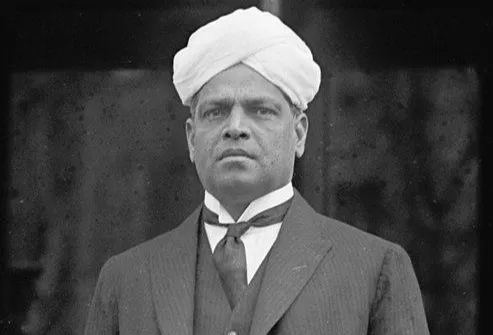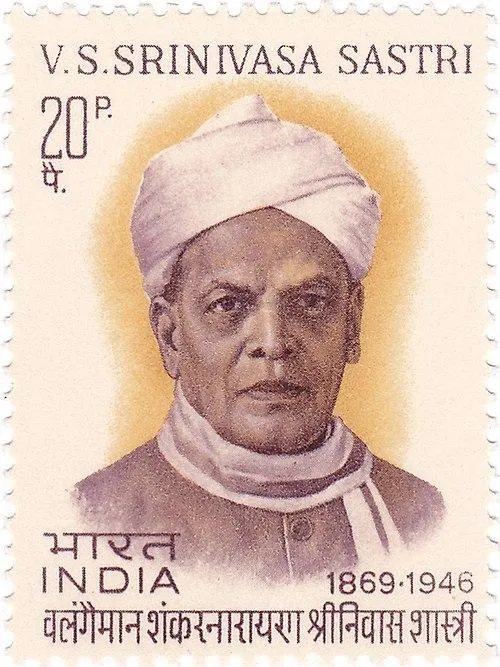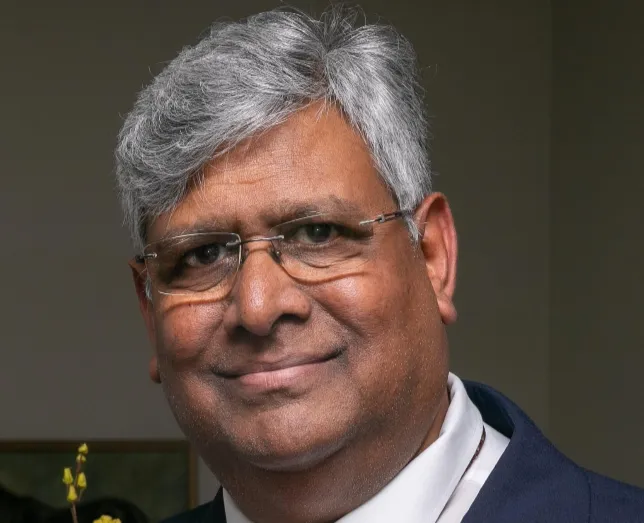Srinivasa Sastri: he forged the destiny of Indian South Africans

Srinivasa Sastri.
Image: Supplied
I got thinking the other day about which one person has had the most impact on the life of the Indian community in this country.
It is a subjective question as different individuals have had varying levels of influence in a myriad spheres of life, such as politics, education, religion, commerce, health, arts and culture, and social movements. Also, at different times and places.
Nonetheless, I applied my mind to the task at hand, and in so doing, I realised that I was venturing into virgin territory. I had never before come across the name of any one person who may be credited for contributing to the overall transformation of the community in immense measure. Some may say Mahatma Gandhi shaped the lives of Indians in South Africa the most.
While in this country he organised non-violent protests against unjust laws. His experiences in South Africa gave birth to his philosophy of satyagraha or passive political resistance, which he used in India's struggle for independence. But I am not convinced that Gandhiji’s leadership placed Indians in South Africa on a trajectory of immense progress, success and development. His appeals and petitions proved ineffective and promises by the British to end racial bias were betrayed.

Sastri College in Durban
Image: Supplied
Others may say Nelson Mandela most influenced the life of Indians. His leadership in the anti-apartheid movement and his presidency in South Africa marked a significant shift towards racial equality and democratic governance. It is true that through Madiba’s sacrifices and statesmanship, millions had the first opportunity to vote, to be treated equally under the law, and to walk freely without fear.
But again, I do not believe Mandela per se helped to empower Indians, open career doors that had hitherto been closed to them and pave the way for a brighter future. By the time he walked out of prison after 27 years on 11 February 1990, the majority of Indians were already living above the poverty line, with most belonging to the middle class in terms of income, education, occupation, and lifestyle. But Mandela certainly helped change the hearts, minds, and the daily lives of Blacks who constitute the majority race group.
There were many people who played no insignificant role in the nation’s Freedom Struggle, several of them serving long terms of imprisonment on Robben Island. Among the scores can be counted the likes of Dr Yusuf Dadoo, Dr Monty Naicker, Ahmed Kathrada, Nana Sita, Indres Naidoo, Ismail and Fatima Meer and Billy Nair. While their activism certainly exposed the pain of racism, it did not move the needle to initiate a clearly discernible change in the Indian’s lot in life.
Many spiritual leaders also played an important role in influencing values, providing guidance, and fostering cohesion in the Indian community, but again none on such a huge scale so as to create lasting change. In my book, the one person who played a seminal role in creating an opportunity that would steer Indians towards landing meaningful jobs, shaping their community life, fostering positive change, and inspiring hundreds of others who have left the most lasting legacies, has got to be Srinivasa Sastri who served as the Agent of the Indian Government in South Africa from June 1927 until January 1929.

The Right Honourable VS Srinivasa Sastri.
Image: Supplied
His bold and powerful vision for educational upliftment during a time of deep social inequality in South Africa saw him sow the seed and lay the groundwork for the establishment of Sastri College, the first high school for Indians, that helped elevate Indians socially and economically, so that they could thrive with dignity, purpose, and opportunity.
Inarguably, Sastri College empowered Indians. Sastri believed that education was the key to empowering the Indian community, many of whom were descendants of indentured labourers or girmitiyas facing systemic discrimination.He spearheaded a fundraising campaign, collecting £28 000 from the local Indian community to build what was to become the foremost educational institution for Indians. He negotiated with the Durban Corporation for the land.
He liaised with the architects. Sastri College which opened its doors in October 1929 quickly became a beacon of academic excellence and a symbol of resilience. It became the crucible that created leaders with core principles that guided action.Some background on Sastri is necessary. He was born on 22 September 1869 to his orthodox Brahmin parents in a village near Kumbakonam in South India. in 1887, he graduated from Pachaiyappa's College, Madras (now Chennai), with a first-class degree in English and Sanskrit.
He began his career as a schoolmaster, but his interest in public causes and his eloquence merged to bring him national fame and he became involved in Indian politics. He was sent by the Government of India to various countries in an effort to improve the position of Indians living there.Sastri was appointed as the Agent of the Indian Government to South Africa in June 1927. He led a delegation to a round table conference in Cape Town to address discrimination faced by Indians.
However, his approach in South Africa - as it also was during his political pursuits for India’s freedom - was rooted in the belief that progress and equality could only be achieved within the existing governing framework rather than actively challenging it. So while his liberalism and diplomacy may have been seen as overly conciliatory by some - with him even being referred to as a "British colonial apologist" - there’s no credible evidence that he was condescending. If anything, he was the kind of leader who listened more than he lectured.
In 1926, whilst the National Party of Prime Minister JBM Hertzog busied itself with plans to repatriate Indians, it became clear that while Indians were reaching out to western standards, they were hampered by the lack of secondary schooling. Colleges and universities were closed to Indians; no technical or industrial education was provided for them; and no teacher training college was available to them.
Sastri was quick to recognise that If the Indian has to be uplifted, then the conditions of their education must be improved. Respected as the “silver-tongued orator”, Sastri made a case for higher education to be opened to Indians, whenever he addressed gatherings throughout South Africa. “If you educate a people, you provide them with the best means of looking after themselves. Illiteracy is in every conceivable way a real menace.
The continued existence of an illiterate, uneducated people, living cheaply on the very margin of existence, and possibly sinking even below that level, is a thing you cannot contemplate with equanimity,” he said, whilst resolving to work to ensure a secondary school was built.Thus, Sastri College became the first Indian high school and played a pivotal role in producing generations of professionals - teachers, doctors, lawyers, scientists, engineers, businessmen and even sportsmen - who helped uplift the Indian community during apartheid and beyond.
Sastri College produced from the ranks of children of Indian workers and merchants a new generation which was not prepared to accept the docility which white liberals were expecting of Indians. Besides being a high school, Sastri College also housed a teacher training college. These teachers helped educate thousands of Indians who made the leap from menial labour to more fulfilling, better-paying work.
Sastri College also housed commercial classes after normal school hours and these developed into the ML Sultan Technical College. In addition, since 1936 Sastri College was used for university education of African, Coloured and Indian students under the then Natal University which prohibited blacks from attending Howard College.
Thus, historically, Sastri College provided secondary education, technical education, teacher training and university education when Indians had no other technical college or tertiary education in the whole of then Natal. Mandela said: “Education is the most powerful weapon which you can use to change the world.” Long before him, Srinivasa Sastri had ignited an education revolution, shaping what will be remembered for generations.

Yogin Devan
Image: File
Yogin Devan is a media consultant and social commentator. Share your comments with him on: [email protected]
** The views expressed do not necessarily reflect the views of IOL or Independent Media.
Related Topics: